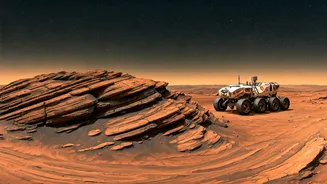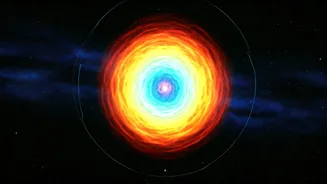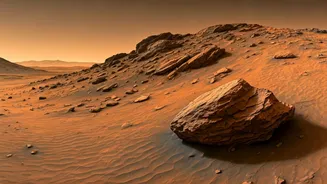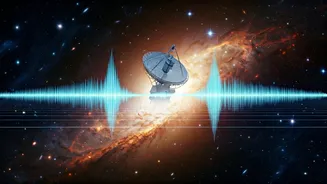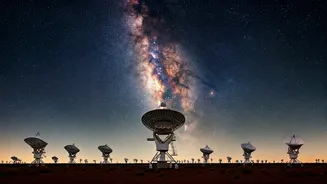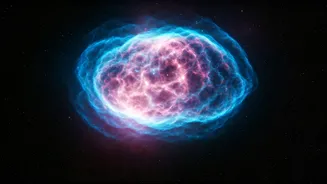Martian Ice Holds Secrets
NASA's ongoing investigations have revealed promising insights into Mars' potential to harbor evidence of past life. Scientific experiments strongly suggest
that Martian ice formations could effectively preserve signs of ancient life. This discovery is a substantial step in the search for extraterrestrial life, as scientists can now focus on specific areas with higher chances of containing well-preserved biological remnants. The focus is on analyzing the composition and structure of the ice to understand its preservation capabilities and identify locations that might hold the best-preserved samples. This research helps refine the methodologies for future missions and increases the chances of finding clear evidence of life beyond Earth.
Proto-Earth Beneath Us
Scientists at MIT have made a remarkable discovery, identifying traces of a lost ancient world, often called 'Proto Earth', hidden deep within the Earth's core. This finding offers new perspectives on Earth's early geological history. The research involved advanced seismic analysis, revealing the existence of distinct layers and anomalies indicating a previously unknown geological structure. The detection of these traces suggests that our planet's formation involved processes and compositions previously unknown. Further studies on this hidden 'Proto Earth' aim to understand the early Earth’s evolution, the separation of its layers, and the development of geological features. The ongoing research is expected to contribute to a deeper comprehension of Earth's dynamics.
Early Universe Unveiled
Astronomers have been employing advanced radio telescopes to construct detailed maps of the early universe. This project, using the Murchison Widefield Array (MWA), allows scientists to observe the universe shortly after the Big Bang. These observations provide a detailed view of the first stars and galaxies, offering insights into the initial conditions of the universe. The mapping efforts are crucial in understanding the formation of cosmic structures and the distribution of dark matter and energy. Through this research, scientists can probe into the origins of the universe and its subsequent evolution. The data from these maps is helping to validate existing cosmological models and discover new phenomena, further refining our understanding of the universe's evolution.
Water Around Young Stars
The discovery of heavy water in the planet-forming disk around a young star has created significant excitement among astronomers. This finding is critical as water is a fundamental component for life as we know it. The presence of heavy water, a variant of water with a heavier hydrogen isotope, in these early stages implies that water, and therefore the potential for life, may be more widespread in the universe than previously assumed. This discovery supports the idea that the ingredients for life are present early in the development of planetary systems. Further studies on the composition of these protoplanetary disks aim to clarify the mechanisms through which water and other life-supporting molecules are distributed across space.
Sinking Cities Strategies
As sea levels rise and climate change continues, scientists are developing and testing nature-based solutions to protect sinking cities. These solutions include projects like mangrove restoration, wetland creation, and the development of sustainable infrastructure. The approach focuses on using the natural environment to build resilience and safeguard coastal communities. These projects involve extensive ecological restoration, focusing on building infrastructure that naturally handles the impact of the climate. The success of these initiatives can determine the long-term viability of coastal areas. These global projects aim to create practical and sustainable solutions for saving cities from climate-related issues, creating safer environments for communities globally.
